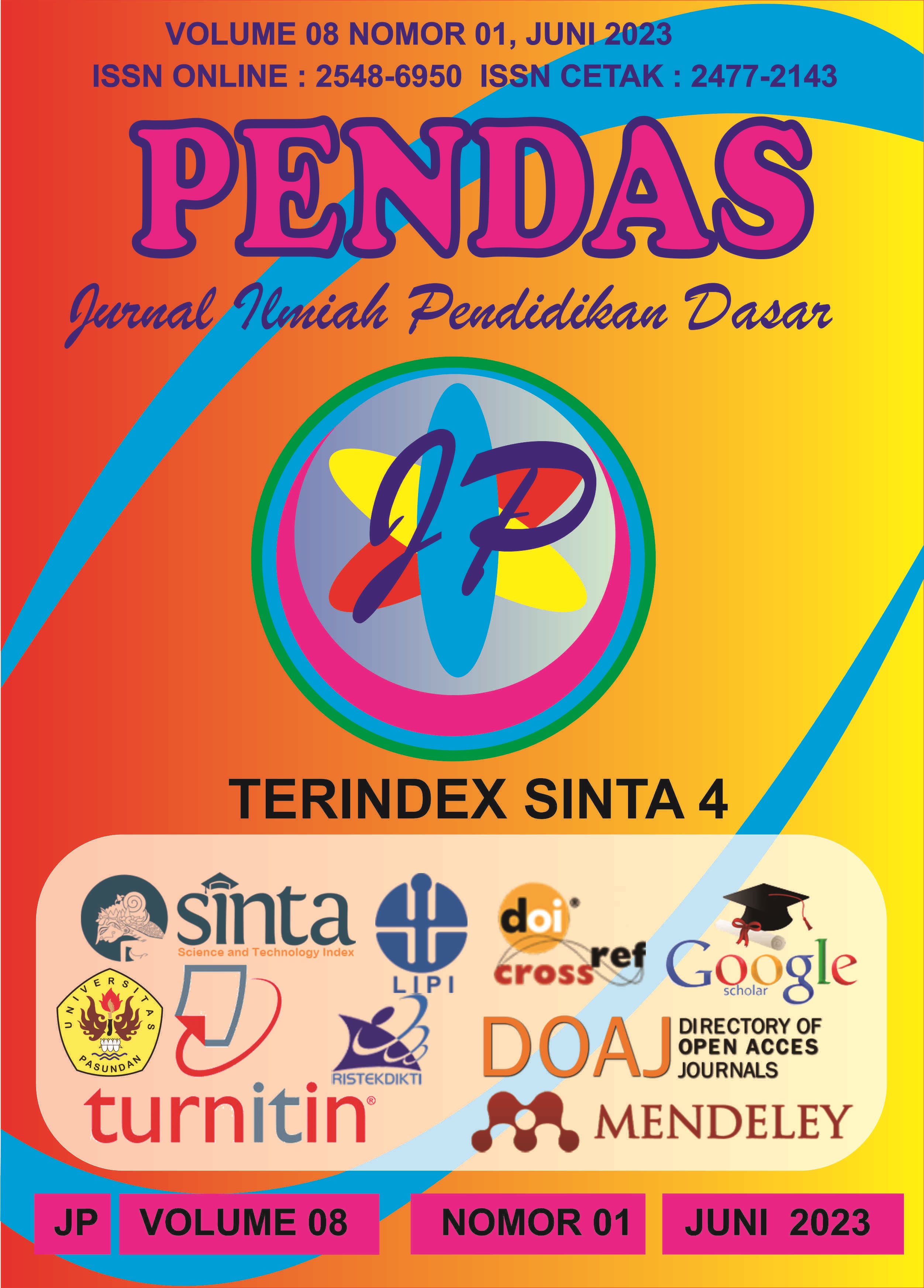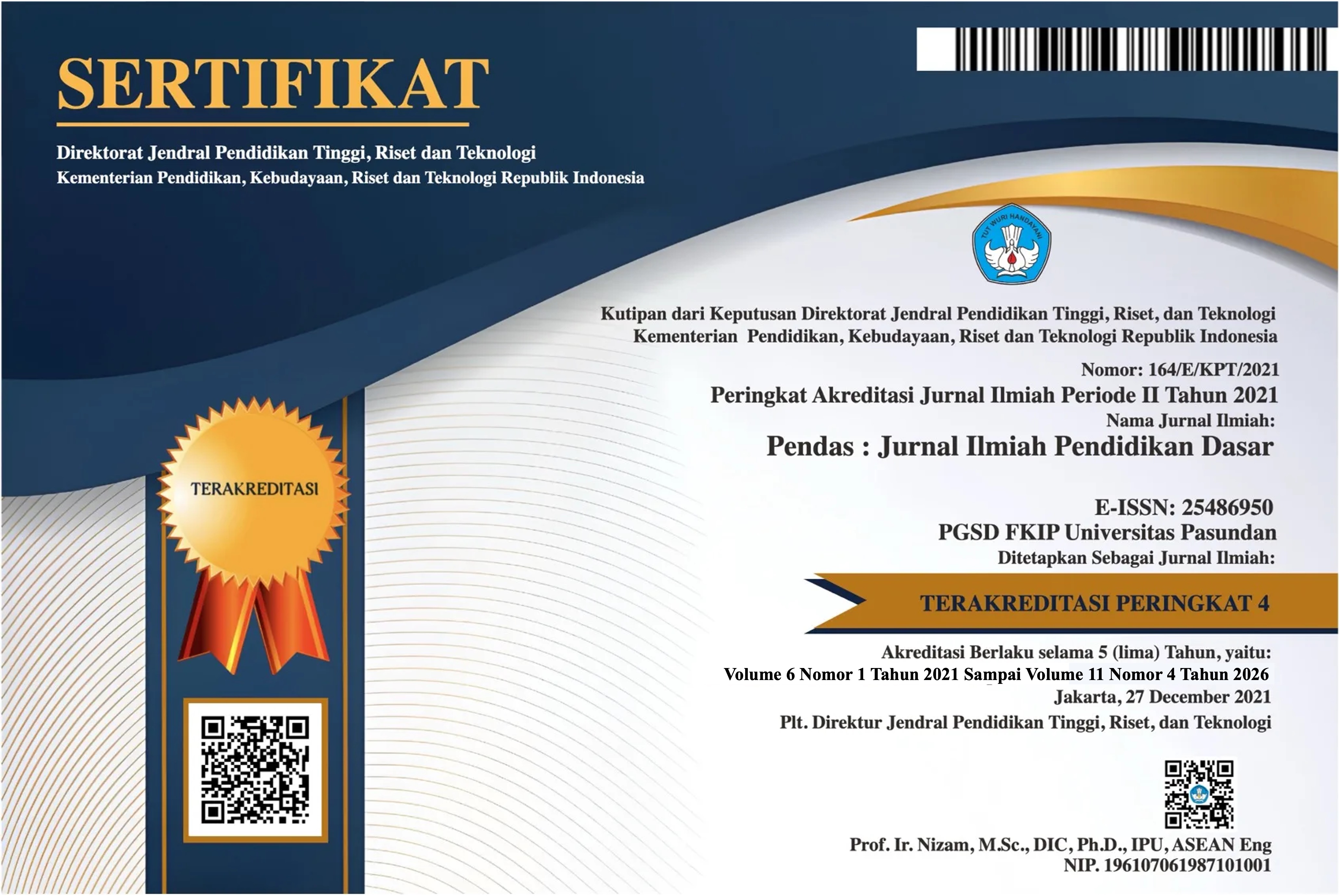HUBUNGAN GAYA BELAJAR DENGAN HASIL BELAJAR MUATAN PPKN SISWA KELAS V SDN 1 PENGADANG
DOI:
https://doi.org/10.23969/jp.v8i1.7826Keywords:
Learning Style, Learning Outcomes, PPKnAbstract
This study aims to find out whether there is a relationship between learning styles and learning outcomes of PPKN content for fifth grade students at SDN 1 Pengadang. This type of research is correlational quantitative research. The technique used is a questionnaire (questionnaire) for learning style variables and documentation to collect learning outcomes. The research subjects were 33 students, namely class V SDN 1 Pengadang obtained by purposive sample technique. Data were analyzed using descriptive statistics and inferential statistical analysis, namely the One Way Anova test. The results showed that the learning styles of fifth grade students were more dominant with kinesthetic learning styles with a total of 12 students with a proportion of 36.3% of the 33 samples, visual learning styles with a proportion of 10 students with a proportion of 30.3%, and auditory learning styles with a proportion of 11 students with a proportion of 33 .3%. The results of PPKN siwa learning obtained from the results of the Final Semester Deuteronomy (UAS) show that students who have learning styles visual, auditory, and kinesthetic obtain an average learning result of 84.24. Based on the results of One Way Anova data with a significance level of 5%, 0.219 > 0.05 was obtained. Thus it can be concluded that Ha is rejected and Ho is accepted. This means that there is no relationship between learning styles and learning outcomes.Downloads
References
Amalda, Nasiti dan Diat, Prasojo, Lantip. (2018). Pengaruh Motivasi Kerja Guru, Dan Kedisiplinan Siswa Terhadap Prestasi Belajar Siswa. Universitas Negeri Yogyakarta. Volume 6, No 1. Jurnal Akuntabilitas Manajemen Pendidikan.
Adawiah, Tri Ambarwati, Dkk. (2020). Hasi Belajar IPA berdasarkan Gaya Belajar Siswa. Skripsi S1, Universitas Flores
Arikunto, Suharsimi. (2010). Prosedur Penelitian Suatu Pendekatan Praktik. Jakarta: PT Rineka Cipta.
Bisri, Muhammad. (2019). Hubungan Disiplin dan Gaya Belajar Dengan Hasil Belajar Muatan Pembelajaran PPKn Siswa Kelas IV SD Gugus Larasati Kota Semarang. Di bawah Tesis Pascaserjana. Unnes.
Departemen Pendidikan Nasional. (2013). Undang-Undang Republik Indonesia Nomor 20 Tahun 2003 Tentang Pendidikan Nasional. Jakarta: Depdiknas.
Ghufron. M. Nur dan Rini Risnawati (2012) Gaya Belajar. Yogyakarta: Al-ruzz. Medan.
Ghifron, M. Nur dan Risnawati. (2014). Gaya Belajar Kajian Teoritik. Yogyakarta: Pustaka Pelajar.
Deforter. B dan Mike, H. 2015. Quantum Learning. Bandung: Mizzan Pustaka.
Nasution. (2013). Berbagai Pendekatan Dalam Proses Belajar & Mengajar. Jakarta: PT Bumi Aksara.
Niswandi, Abdi. (2021). Hubungan Gaya Belajar Siswa Dengan Hasil Belajr Mutan IPS Siswa Kelas IV Sekolah Dasar Gugus 04 Masbagik, Skripsi SI, Universitas Mataram.
Nurhasanah, Ilham Syahrul Jiwandono, M. A. (2020). Pengaruh Pemberian Reward Dan Punishment Terhadap Motivasi Belajar Siswa Pada Muatan Ppkn Kelas Iv Sdn Pemepek Kecamatan Pringgarata Tahun Ajaran 20202021. Jurnal Inovasi Penelitian, 1(7), 1289–1296. https://doi.org/https://doi.org/10.47492/jip.v1i7.229
Raihan Fauziah, Nurul Kemala Dewi, Nurul,Syahrul Jiwadono, Ilham (2022) Pengembangan Media Poster Muatan PPKN Materi Pancasila Kelas IV Journal of Classroom Action Research
Sugiyono (2018). Metode Penelitian Kuantitatif, Kualitatif, dan R&D. Bandung: Alfabeta
Sugiyono (2019). Metode Penelitian Pendidikan. Bandung: Alfabeta
Sudjana, Nana. (2013).Penilaian Hasil Proses Belajar Mengajar. Yogyakarta: Pustakan Maduni.
Downloads
Published
Issue
Section
License
Copyright (c) 2023 Pendas : Jurnal Ilmiah Pendidikan Dasar

This work is licensed under a Creative Commons Attribution 4.0 International License.



















